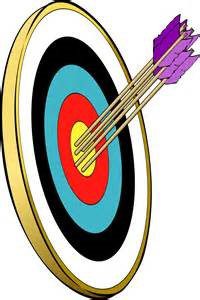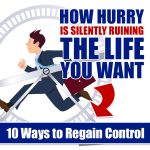 Trying to make better decisions today can be soooooo frustrating.
Trying to make better decisions today can be soooooo frustrating.
Even when you really, really want to make the best decision, and you take time to think it through, it often turns out less than you hoped.
What gives?
Here’s the problem — we typically make decisions based on a faulty process. No matter how deliberate you are, if the way you make decisions is screwed up… you will get screwed up decisions.
But, there is a simple approach you can use that will significantly increase the odds of a good outcome.
Good Decision-Making: a Frustrating Reality
The sad reality is that no one is immune from making a bad decision… even when you are trying to make better decisions.
 In their excellent book Decisive, Chip and Dan Heath note how even careful decisions by bright people often turn out badly:
In their excellent book Decisive, Chip and Dan Heath note how even careful decisions by bright people often turn out badly:
- 44% of lawyers recommend young people not pursue law (and avoid the regrets they have experienced from their earlier, seemingly thoughtful decision to pursue law).
- In a study of over 20,000 executive searches, 40% of senior level hires are gone in 18 months (either fired or they quit). Do you know how much time, effort and money are put into the process of finding “a good candidate”… and yet almost half the time it is a total bust?
- In the world of business acquisitions and mergers, where extensive analysis by very smart people is made on which companies to acquire and merge with, a full 83% of those mergers and acquisitions fail to help the acquiring company’s bottom line. Can you say “swing and a miss?”
You see, it isn’t just you who struggles with making a good decision that turns out well. We all do.
What can you do?
Fortunately, research is learning how to make better decisions… and why we often don’t.
What Science Has Revealed About Poor Decision-Making
 One of the truths uncovered from research on how we often make decisions (that end up turning out poorly) is we unknowingly use a flawed process.
One of the truths uncovered from research on how we often make decisions (that end up turning out poorly) is we unknowingly use a flawed process.
Here’s an example of how a flawed process impacts the end result (even if you do everything else right):
Imagine my goal is to throw a baseball accurately to home plate. This is very important to me so I take the time to line up carefully. I concentrate and focus. I take a deep breath and envision the ball going right over the plate. But, if I repeatedly use the wrong hand (I’m right-handed, so in this example I throw it with my left), what happens? Well, let’s just say it looks ugly and bounces to the plate.
Best of intentions + rational, focused effort + flawed approach = lousy results
Our Problematic Decision-Making Perspective
 Daniel Kahneman and Amos Tversky in their groundbreaking research confirmed that we humans most often use a very narrow perspective when making decisions. They called it “what you see is all there is.” I call it the Focusing Illusion.
Daniel Kahneman and Amos Tversky in their groundbreaking research confirmed that we humans most often use a very narrow perspective when making decisions. They called it “what you see is all there is.” I call it the Focusing Illusion.
Simply put, we focus in on and give too much weight to the information right in front of us, while virtually ignoring information and options outside our line of sight.
We act as though “what we see is all there is” (to consider).
It is like we are camera operators in a theater, focusing in on one actor on stage, seeing every detailed facial expression and as a consequence we don’t pay attention to (or even notice) the other actors on stage, or even the stagehands running around setting up the props for the next scene.
As you will see, that is a real problem.
How This Flawed Approach Is Used In Decision-Making
Perhaps the most common way this flawed approach impacts our decision-making is that we frequently make decisions based on a single option.
“Should I take this job (or not)?”
“Should I quit this job (or not)?”
“Should I fire this employee (or not)?”
“Should I buy this car (or not)?”
Like the camera operator, we are zeroed in on this one thing, this one option and we fail to notice or consider other options and variables.
We think we are being careful and deliberate. But, if we are using a flawed process, that is not how to make better decisions.
The Outcome Of Using This Flawed Approach
Modern research has confirmed that single option decisions usually produces fewer good outcomes.
Here are just two revealing studies that come from the world of business. These are particularly instructive because these decisions were not made impulsively or without careful deliberation. Instead, these companies were diligently trying to make a good decision.
- Two German professors examined every major decision made at a technology firm over an 18 month period. With the assistance of the company, they were able to assess the issues being evaluated, the process the company went through to make the decision and the outcome of that decision several years down the road.
What they found was that of the 83 major decisions made during the period they examined, the company itself in hindsight rated a decision as “very good” only 6% of the time when it involved a single option, but 40% of the time when two or more options were considered.
In other words, this study concluded that the company was nearly 600% more likely to have a very good outcome if it made a decision with more than one option. Making single option choices dropped the odds significantly of seeing a “very good” outcome. - Researcher Paul Nutt rigorously evaluated 168 decisions made by various companies and determined that only 29% of the companies made decisions based on more than one option. 53% of the single option decisions failed over the long run, compared to only 32% of the decisions with more than one option.
Here is what all the research is telling us: We stack the deck against ourselves from the beginning when we focus on only one option.
 We are like the professional football organization that year after year makes poor decisions on who to draft, resulting in the team being a bottom dweller. The problem is that despite our careful analysis of a possible draftee, we are looking at just one candidate at a time.
We are like the professional football organization that year after year makes poor decisions on who to draft, resulting in the team being a bottom dweller. The problem is that despite our careful analysis of a possible draftee, we are looking at just one candidate at a time.
“Should we draft this tight end or not?”
Other organizations are looking at different candidates in different positions at the same time to assess who is the best choice for them at that moment of the draft. Maybe they shouldn’t draft a tight end at all (if the quality of the tight ends is poor at that point in the draft).
The next time you are trying to make an important decision and you hear yourself say “or not” as in “should it do this… or not?” you should have warning bells go off in your mind that you are setting yourself up for potential decision-making failure.
How To Overcome Our Flawed Decision-Making Approach
If expanding your options is one key for how to make better decisions, what can you do to come up with more options to consider?
I suggest using what I call The Panorama Technique to expand your perception of other options you might not have considered.
 Think back to the cameraman example. You stop focusing in on this one actor and instead you intentionally zoom out and around to see the entire stage.
Think back to the cameraman example. You stop focusing in on this one actor and instead you intentionally zoom out and around to see the entire stage.
Ok, I get it… evaluate more options. But, if I can’t see them, how do I come up with more?
Creatively Seeing More Options
One simple way to see additional options is to remove the initial option entirely from view. If that option is not an option anymore, what other options are there?
It is amazing how this simple action can force us to see new options.
 For example, one of your managers comes to you reporting on the subpar performance of a particular employee. The employee had shown some real promise in times past and even excelled in certain situations. But, over the last 6 months they have not kept up and are doing poor work. She wants to let the employee go and hire a new employee.
For example, one of your managers comes to you reporting on the subpar performance of a particular employee. The employee had shown some real promise in times past and even excelled in certain situations. But, over the last 6 months they have not kept up and are doing poor work. She wants to let the employee go and hire a new employee.
The single option focus is: Should I release this employee (or not)? Notice that little phrase again?
If you take this option away and force yourself to get a panoramic view of options, what else can you do?
- Investigate their personal life and determine if the slip in performance is due to something going on in their life that is dragging them down. If so, you might be able to point them toward resources that can help them through it and get them back on track. You might get your performing employee back… and create a loyal, grateful employee in the process.
- Does this person need additional training because they are doing something new that is causing them to flounder?
- Would this person do better in a different role or department? They might excel if they are able to do those things they were best at (vs. what they are currently doing).
- Have the employee work under a different manager who might be able to get better performance out of them.
Letting the employee go may be the best decision after evaluating all your options. But, if that is the only option you are considering, then research reveals statistically you are stacking the odds against yourself that you will make the best, most optimal decision in that situation.
What decisions are you facing that could benefit from additional options?
More Ideas On How To Make Better Decisions
Need more creative ways to expand your options? There are 3 other excellent option producing techniques discussed in our free resource: The 5 Step Process to Making Better Decisions (Research-Backed).
In fact, the free guide covers ALL the main problem areas that hinder our decision-making process.
If you would like to significantly increase the odds of making good decisions, download your free step-by-step guide now.









Every time I read this I learn more
My best take-away is focusing on more than one option. This week I made an error in forgetting the multi- pronged approach, but I used it in another decision I successfully made. Thanks again for this excellent article.
Glad you found the article helpful Pam! Yes, my goal is to get more consistent in applying these principles so I can give my decisions the best odds for success. Keep up the good work!
Thanks Pat, it is a great article and an eye opener to find how wrong we can be when making decisions and I am very glad to at least be aware of that and trying to get a panoramic view all the time.
You are so right Julio. It was also eye opening for me to discover that my decision making process was flawed, virtually guaranteeing a less than optimal decision. Using the panorama technique has been super helpful when facing a difficult decision. Thanks for your input!